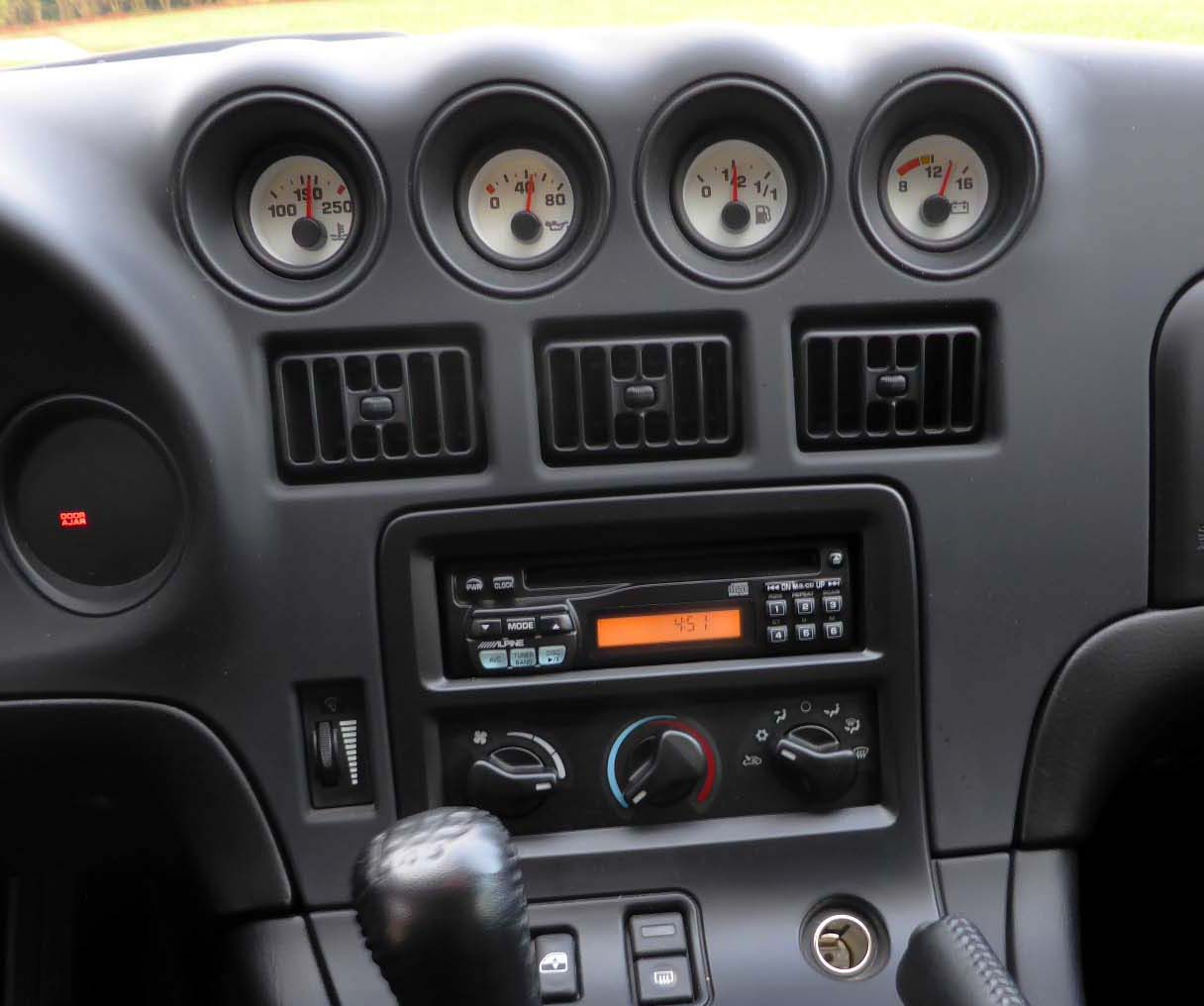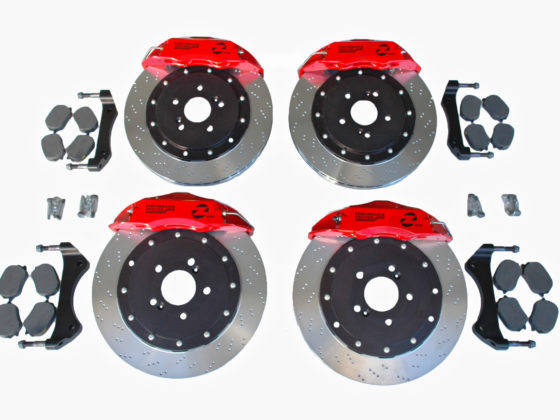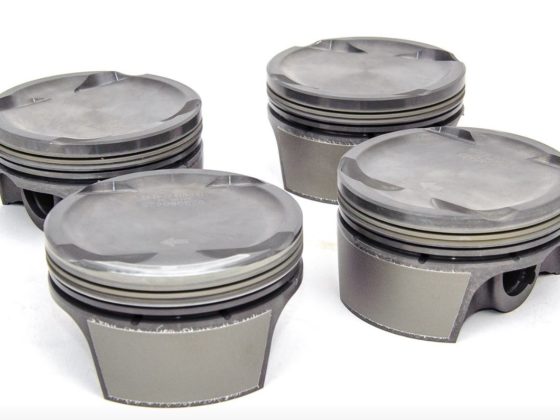
I have simplified everything from the owners manual in the above easy to read and reference photo.:
Factory:
Low-Speed fan OFF: 201*F
Low-Speed fan ON: 207*F
High-Speed fan OFF: 208*F
High-Speed fan ON: 216*F
After closely analyzing the temperature of the factory cooling system over hundreds of miles, during Part 4 – Dyno and Intake Test, we used the SCT tuner to flash our ECU with a tune from Roe Racing to change the fan temperatures so the LS fan turns on at 195*F, the same temp as the factory thermostat starts to open (but this isn’t too relevant because the AC is almost always on when driving the car in South Florida, so the LS fan will be on anyway) but more importantly, the HS fan temperature was lowered down to 205*F.
Lowering the HS temp to kick on at 205*F instead of 216*F greatly stabilized the needle and prevented it from reaching the ¾ mark under most conditions. Keep in mind that 216*F (the ¾ mark) is when the HS fan switches on, and the needle often over-shoots the ¾ mark by a good margin before bringing the temperature back down.
After analyzing the data of many modern stock cars, from BMWs to Mustangs, Porsches, and various trucks, it is very common to see water temps reach 218-220*F before the fans bring the temperature back down to 195-200*F range. Because of this, I will be raising the High-Speed fan ON temperature up to 210*F since I too fell a victim of being paranoid of the valueless gauge moving close to red, which is NORMAL and perfectly fine. As long as it does not cross the line into the red.
Swapping the radiator fan out like we did in Part 5 – Radiator Fan to the newer (and almost impossible to find) 1999-2002 fan greatly helped due to the increased (350) CFM. The stock 2,020 CFM fan struggles to bring down the temperatures quickly in 90*F+ weather.
Between installing the 1999-2002 fan and lowering the HS fan temperature to 205*F, our temperatures have stabilized and rarely reach the 216*F ¾ mark on the gauge. This helps reduce the uneasy feeling of seeing the needle swing so far to the right, which is a NORMAL behavior for the Viper and completely fine.

In most cases, Viper’s won’t overheat if there are no problems with the cooling system. Now if you live where it gets to the mid-90’s or break the 100*F mark, and you’re in stop and go traffic, the factory 2,020 CFM fan will probably not be sufficient and your car can overheat. In reality the newer fan might not be able to keep the V10 from overheating in stop and go traffic either. Also keep in mind that a lower thermostat will not have any effect on the outright cooling ability of the radiator. If the car is going to overheat, it will overheat even with a lower thermostat (both a lower temp and stock thermostat are open above 216*F).
Due to the small grill opening, the Viper needs to be rolling with reasonable air speed to have enough air flow through the radiator to keep the temps in check. In most cases, it’s rare for the Viper to overheat even in extreme temperatures when you’re traveling at 30-45mph+.
Hopefully this better understanding of the factory gauge will give more piece of mind that the excessive movement of the needle is in fact normal and often nothing to worry about. If you live in the south, at a minimum, lowering the HS fan temp would be a very good idea, and always keep an eye out for a 1999-2002 fan.




3 comments
I love the minimalist dash of the Viper. Really lets you focus on driving!
Amazing what you can find in owners manuals… Especially older ones. A 2002 CRV manual gave the recommended tire pressure for 160 mph runs. As well as instructions for how to change the spark plugs. You don’t see that anymore
I keep coming back to re-read the articles from time to time.
Any chances the car will go on sale at the end onf the project? That is one of the cleanest ’97s I’ve seen!
Keep up the good reads!